Back Hand Mehndi Designs: 10 Best Trends For 2025
These intricate and attractive options are all you need to add to your hands' beauty.
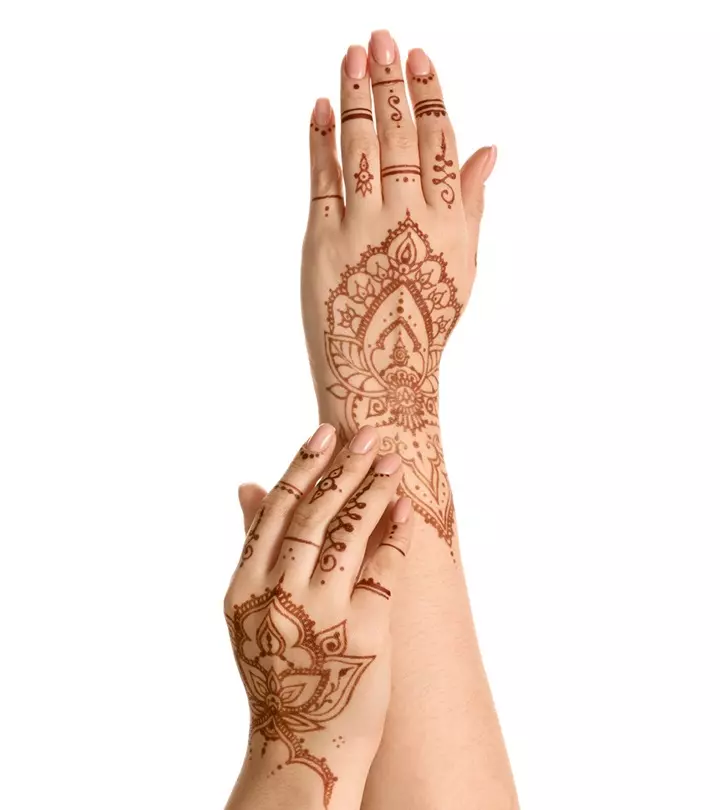
Image: Shutterstock
Mehndi, also known as mehendi or henna, is a traditional style of body art with roots in India, South Asia, and the Middle East. Its history dates back to ancient times. It is not just an adornment; it holds meanings of happiness and good fortune and marks the beginning of a new vital life stage such as marriage and festivals. A mehendi event brings all female relatives and friends together and it becomes a happy collective that creates intricate designs on each other’s hands and feet. The ceremony is accompanied with music and dancing. It is often believed that the deeper the color of henna, the stronger the love between the two people. When applied during festivals like Diwali or Eid, it symbolizes good omen and protection. Today, it has gone on to become one of the best-loved traditions that transcends generations and borders.
The mehndi designs for back hands are usually bigger and not as intricate as the mehndi designs on the palms so that they are prominently visible.
Watch a How to Make Mehendi Designs video from our StyleCrazeTv
 Keep In Mind
Keep In Mind- Timeless Mehndi Designs: Designs with intricate leaf and flower motifs and bead works are timeless and popular as back hand mehndi designs.
- Uncommon Motifs: Abstract and geometrical patterns and tribal block motifs make for unique mehndi designs for the back of the hand.
- Highlighting The Borders: Black mehndi is prepared by adding black color to natural henna. It is used to highlight the borders and make the entire design more prominent.
- Caution: Henna is not approved for body art in the US and can only be used as a natural hair dyeing ingredient.

In This Article
10 Best Back Hand Mehndi Designs To Try In 2025
As per Indian tradition, decorating the hands and feet of brides with Mehndi is a huge part of the wedding ceremony. Additionally, Mehndi is a common way to mark celebrations of Hindu festivals like Diwali, Karva Chauth, Vat Purnima, and numerous others.
Mehndi designs can have different meanings depending on where they are placed on the body. Designs on the back of the hands typically feature protective symbols. On the other hand, designs on the feet represent the connection between people and the Earth, and should reflect this theme.
Some common patterns and images used in Mehndi include:
- Mandalas (represent wholeness and a connection between humans and the universe)
- Upward pointing triangles (representing the male principle)
- Downward pointing triangles (representing the female principle)
- Squares (indicating dependability or order)
- Diamonds (symbolizing enlightenment)
- Circles (representing reality)
These designs are often used for various events and festivals, each carrying different meanings and emotions.
Here are the top 11 back hand mehndi designs to try.
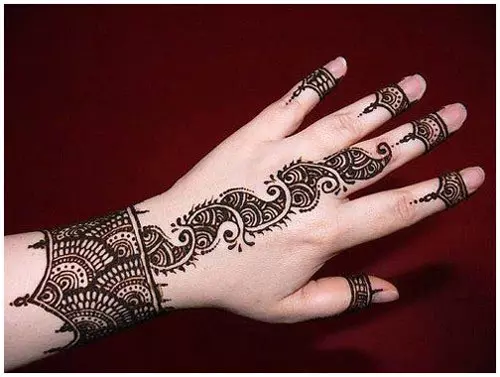
1. This typical choice of the back hand mehndi designs is drawn using intricate leaf-shaped motifs. The main string of leaves runs down only through the middle finger so that rings and other accessories can be easily worn on the other fingers without hiding the mehndi design. The tips of the fingers are beautifully decorated with miniature designs.
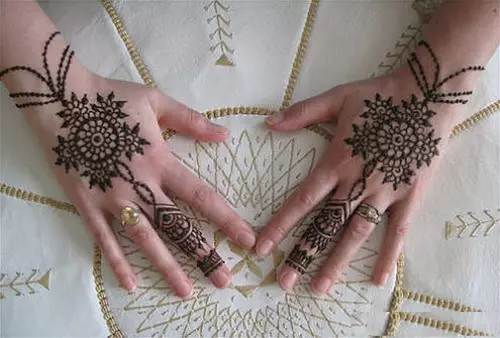
2. This simple back hand mehendi design is the perfect example of how henna can be used as an accessory too. It starts from the middle finger on both hands and runs down the back of the hand to the wrist. This design completely resembles the jewelry where the ring is attached to the finger and covers the back of the hand. The pattern is kept very traditional with flower motifs and bead works.
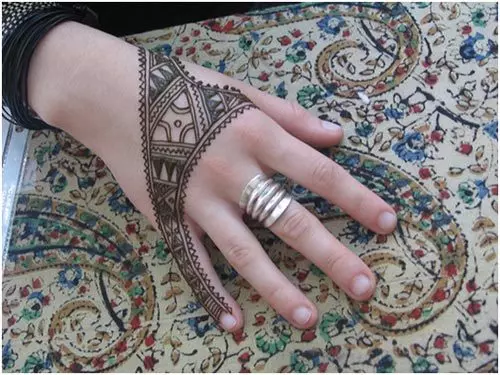
3. A very modern twist to an otherwise traditional mehndi design. The pattern resembles a tribal block design that runs down through the little finger. This simple mehendi design looks chic, fashionable, and trendy and can be sported for any casual event. One can also use it as a henna tattoo without applying mehndi on the palm.
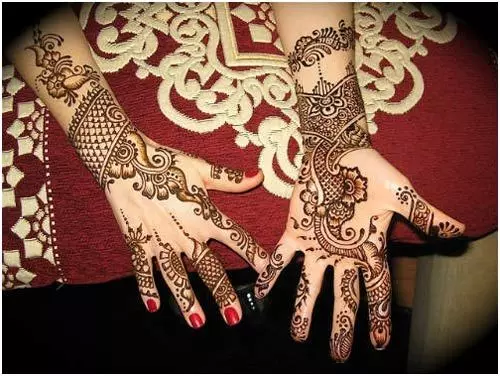
4. This Arabic mehendi design can be worn by both the bride and her friends. The design consists of only flowers, leaves, and a creeper pattern. An adequate amount of space is left between the two patterns, giving it a very non-messy look. The mehndi design on the palm and the back of hand are almost identical to each other. Black mehndi has been used to enhance the borders and regular mehndi has been used to fill up the entire design.
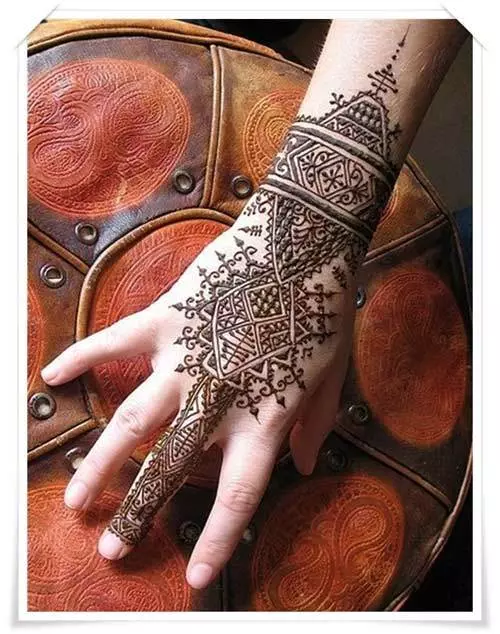
5. This is an example of an abstract pattern for back hand mehndi design. Emphasis is on the center of the back hand where geometrical shapes have been used to create the pattern. You won’t find the use of traditional flower and leaf motifs, thus this design turns out to be unique yet elegant.
 Quick Tip
Quick Tip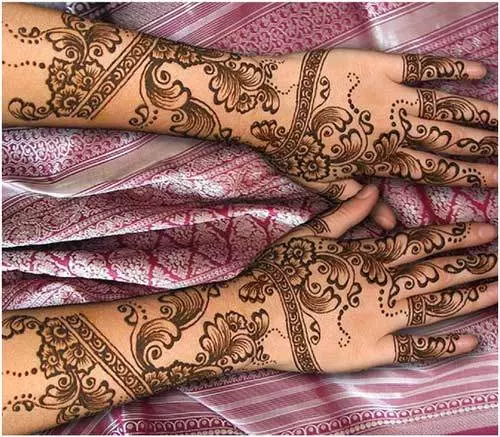
Aryaa Akshay, a blogger, shares her experience of creating a mehendi design on her hand in her blog. She has chosen an abstract design and she says, “I love using lines in my designs & when it’s abstract, I just feel my creativity flows at double the speed (i).”
6. This Arabic mehndi design is been quite popular and you will see it everywhere. The pattern is similar on both the hands extending till half of arms. Heavy use of decorated leaves and creepers with adequate spacing makes the design look non-messy and elegant. This is the perfect and most sought-after bridal design during weddings.
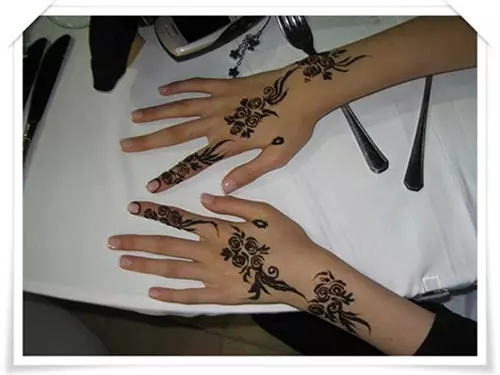
7. Are you planning to ink a new tattoo? Then try this one of the mehndi designs for back hand that looks like a henna tattoo without undergoing the pain of needles. This mehndi design resembles modern day Arabic tattoo with rose buds and leaves motifs. Three similar patterns are drawn on the entire hand, spaced properly which makes the design appealing and stand out.
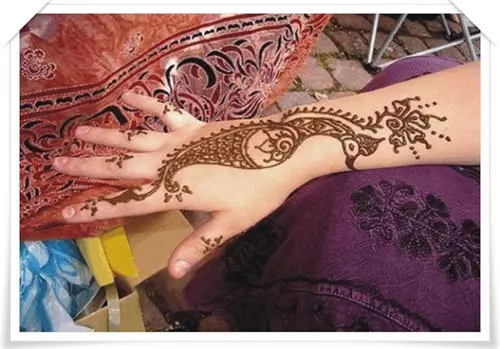
8. Animal or human figures are very common in Indian mehendi design. The above design consists of a peacock which covers the entire hand, but intricate details are not added which gives it a very clean and refined look. Miniature patterns have been drawn on all the fingers, keeping the overall look simple yet stylish.
 Did You Know?
Did You Know?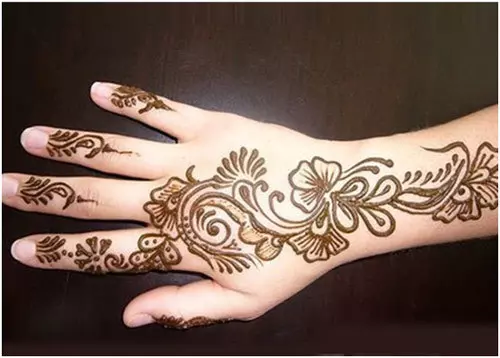
9. Yet another arabic mehndi design which is one of most common patterns nowadays. Bold flower designs are used to fill up the hand, which are easy to design and easy to apply. One can use black mehndi to draw the outline and normal henna to fill up the design. This particular design can be applied by any group of women, old or young and on any occasion.
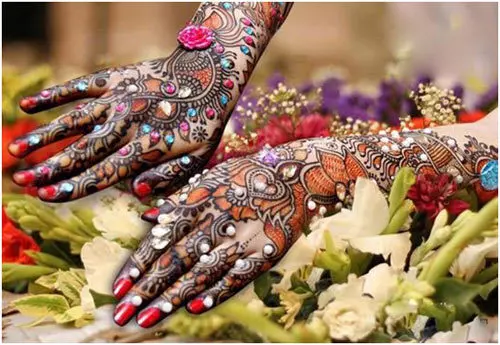
10. This heavy studded mehndi is suitable only for the bride. Use of different kinds of mehndi like the black mehndi, red mehndi and normal henna can be seen in this design. Small and big stones have been placed beautifully to enhance the design. As you can see, small pearls have also been added over the tips of the fingers. Try this unique design if you want to add a bit of uniqueness to your regular mehndi.

11. This beautiful Rajasthani mehndi design is every bride’s dream come true. Rajasthani mehndi uses elements like leaf motifs, flowers, jali work, geometry, and mandalas. The depiction of the bride and groom on each palm stands as the highlight of the mehndi. This type of mehndi usually remains crowded not leaving out much space between the designs. This mehndi is more suitable for either a wedding or some event along that line if one leaves out the design of the bride and groom. The tip of each finger does not contain any design, instead, a thick layer of mehndi is applied. A mehndi cone with a thin tip is used to create fine strokes of mehndi.
 Quick Tip
Quick TipKey Takeaways
- Henna, commonly known as mehndi, is a type of traditional body art that originated in South Asia and the Middle East.
- There are countless variations in mehndi designs, from geometrical patterns to floral motifs.
- Mehndi is often a part of Hindu celebrations such as Diwali, Vat Purnima, and Karva Chauth.
- Some common motifs used in Henna are mandalas, diamonds, squares, and circles.
Infographic: 7 Interesting Facts About Mehendi/Henna
The practice of applying henna/mehendi to adorn the body dates back to ancient times. Modern times have seen so many different takes on designs and ideas for using this herbal paste.
Check out this infographic to get some fun trivia on henna and a few tips on getting the best out of the henna paste.
Some thing wrong with infographic shortcode. please verify shortcode syntax
Mehendi, also known as henna, is a temporary pattern drawn on your hands and feet as a form of celebration. While they are predominantly applied on your palms, most patterns include a backhand mehndi design as well. These specific designs tend to be simpler but are beautiful nonetheless. Our compilation can help you select patterns that you’d like to adorn your hands with. You can add your own spin and personalize these Mehendi designs. Getting these temporary tattoos can be a fun bonding experience for you and your close ones. So, go ahead and arrange your own Mehendi session!
Frequently Asked Questions
What are some quick mehndi designs for festivals?
Mehndi designs are easy and they add a special touch to festivals and other occasions. Some simple designs that add great visual effects are flowers, geometrical shapes, dotted patterns, mandala outlines, hearts, and swirls, which are all easy to create. These designs are perfect for any occasion. Don’t forget to add personal elements to make your design uniquely yours!
What are the types of mehndi designs?
There are many different types of mehndi designs like Arabic, Indian, Indo-Arabian. Pakistani, Moroccan, Western, Indo-Western, and more.
What is Western-style mehndi design?
The Western-style designs use circles, floral patterns, lines, and dots to create simple yet beautiful mehndi designs.
What are two interesting mehndi features?
Mehndi can be used to cool body temperature. It can be used to improve hair health and stimulate hair growth.
Is henna Indian or Arabic?
Henna was used in Egypt around 9000 years ago, henna traditions have origins in Libya, Assyria, Persia, the Mediterranean, Mesopotamia, Tunisia, India, and Nubia. The tradition of using henna to decorate hands and feet originated in India. The word ‘henna’ is derived from the Arabic word “al hinna.”
Get creative for Eid with beautiful back hand mehndi designs! Check out the below video and learn how to create stunning mehndi.
Personal Experience: Source
StyleCraze's articles are interwoven with authentic personal narratives that provide depth and resonance to our content. Below are the sources of the personal accounts referenced in this article.
i. Lines & geometric Shapeshttps://ibelivetoday.wordpress.com/category/my-mehendi-designs/
Read full bio of Simone de Vlaming
Read full bio of Jyotsana Rao
Read full bio of Asmita De
Read full bio of Anu Pallavi







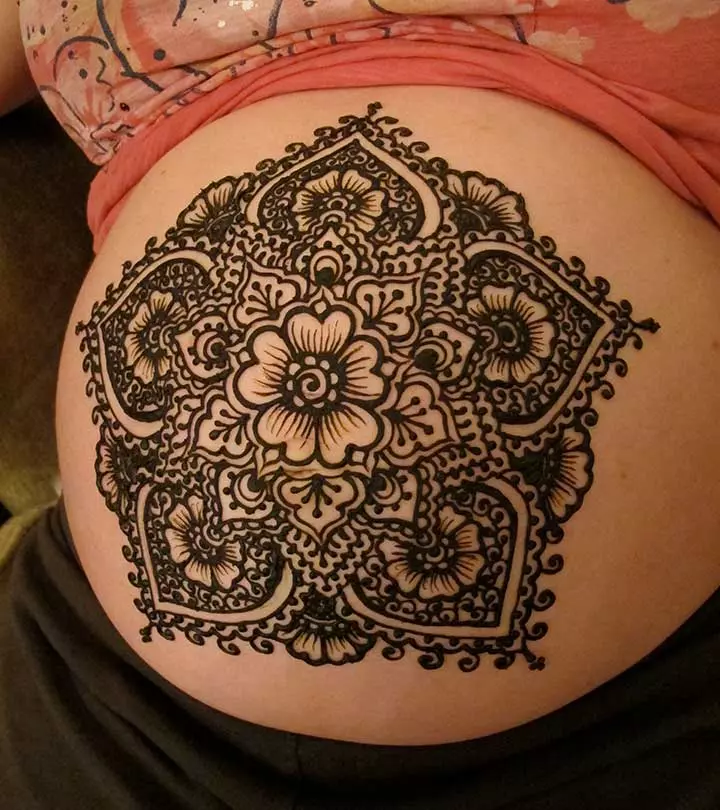
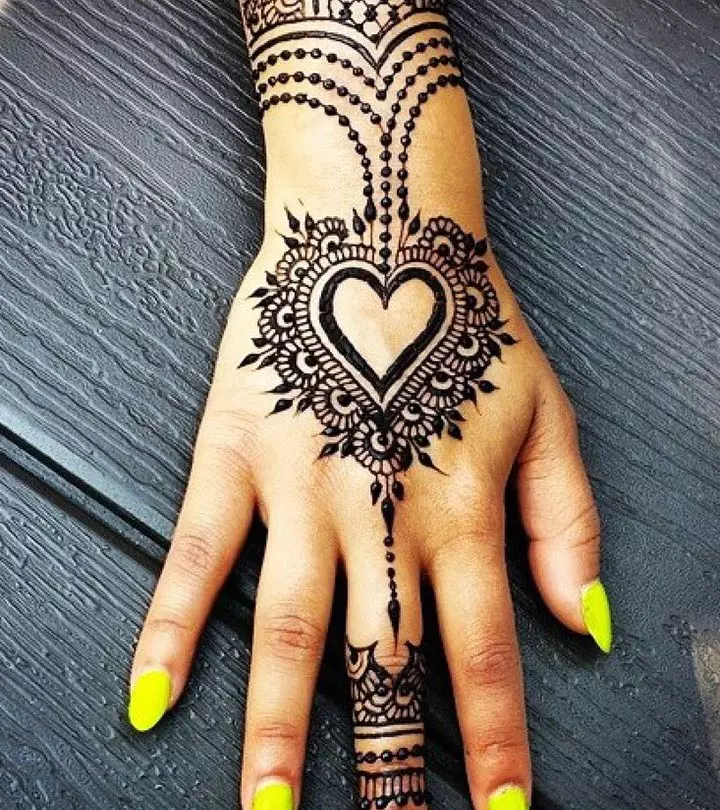
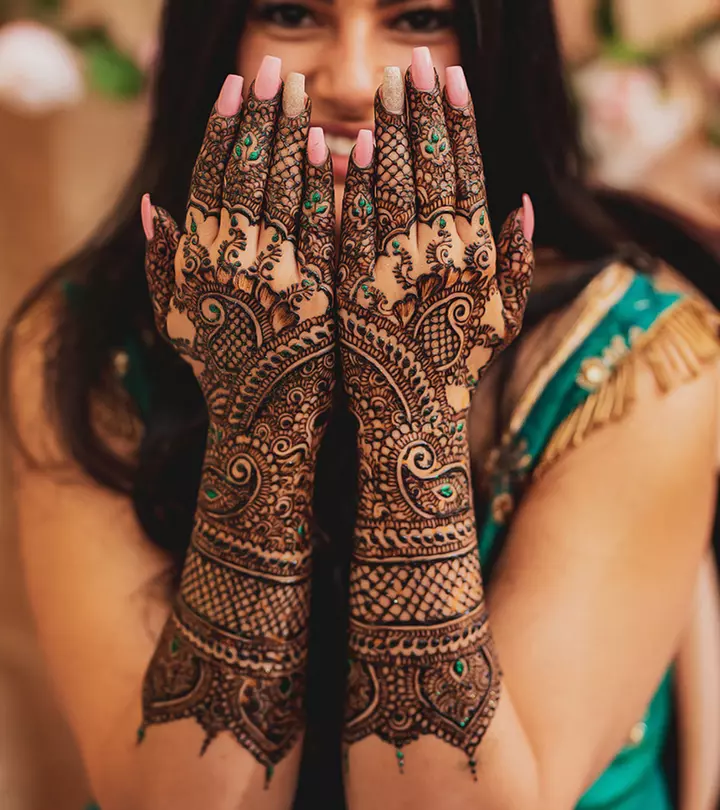
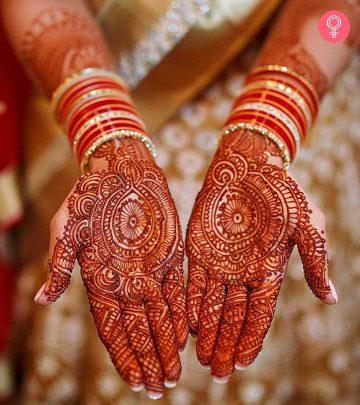
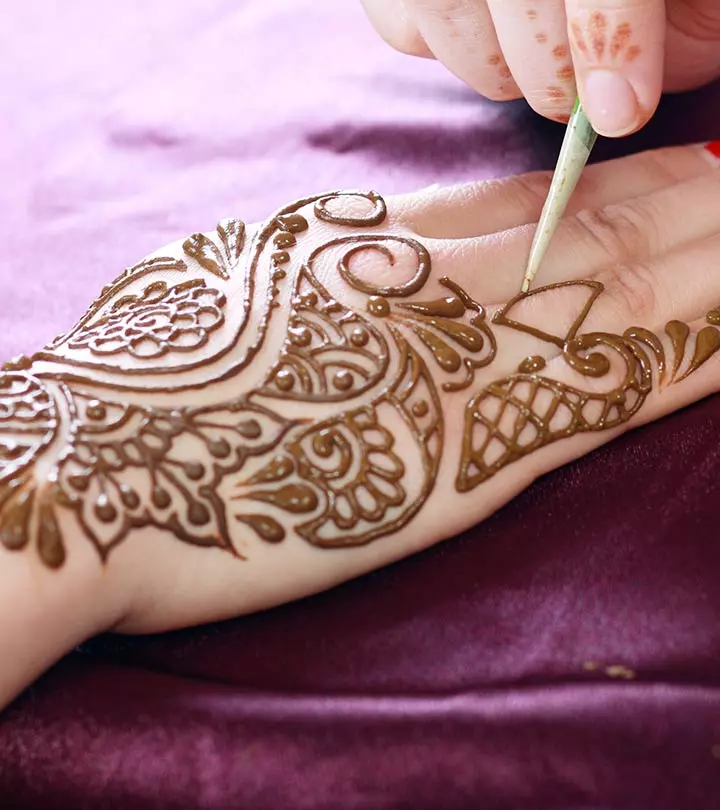
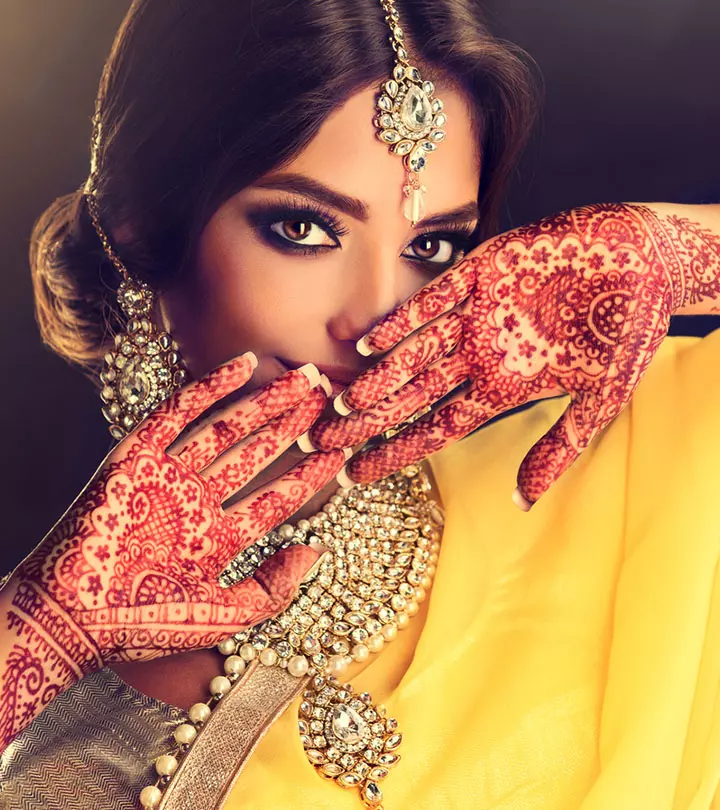
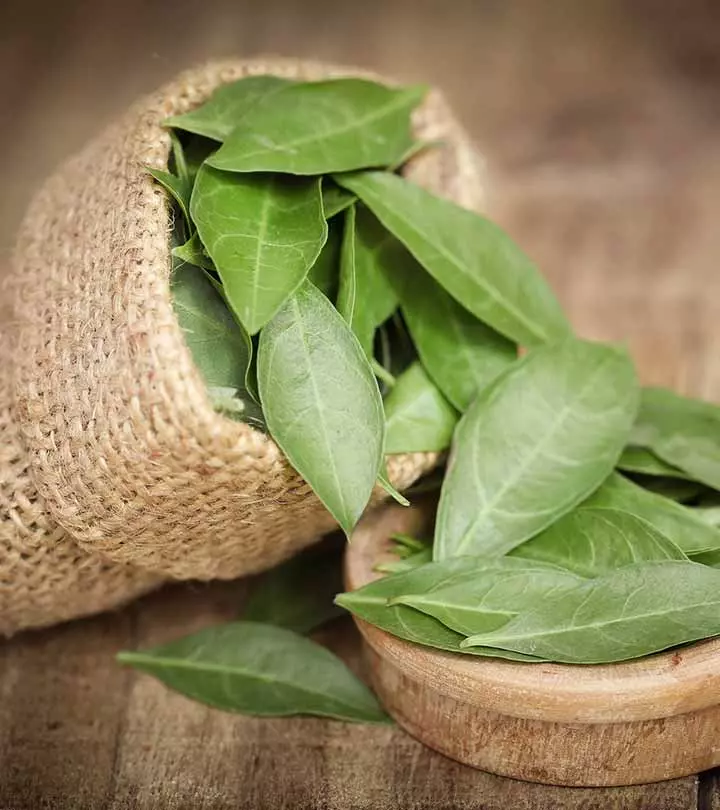
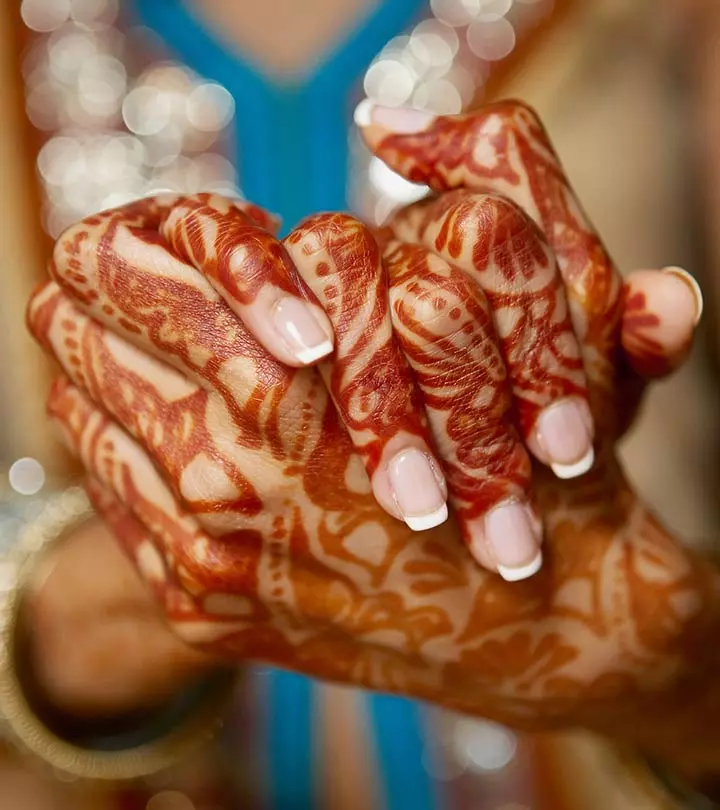
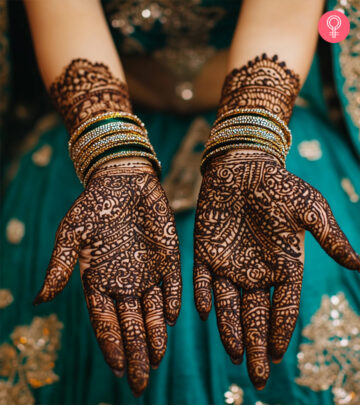
Community Experiences
Join the conversation and become a part of our empowering community! Share your stories, experiences, and insights to connect with other beauty, lifestyle, and health enthusiasts.